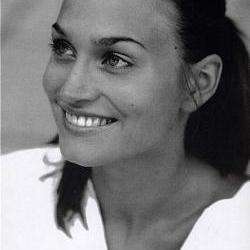Stefan Herheim has chosen to mark his pivot from director to Intendant of what was until recently known as Theater an der Wien by going big. His self-directed production of Leoš Janáček’s tricky fable opera The Cunning Little Vixen is opulent, technically complex and grand both in scale and aesthetics, and also packed with meta commentary. Perhaps as a nod to the renovations happening behind the scenes as productions are displaced from the Theater’s regular home to the Museumquartier for two years of costly renovations, the staging opens and closes with backstage scenes; an enormous dragonfly is being constructed, or parts of a gigantic heart painted (stage design by Silke Bauer). Not that everything was oversized; the amount of charm that the protagonist conveys with a simple hand-puppet head and bushy tail was as subtle yet impressive (costumes by Doris Maria Aigner).
Janáček’s opera runs on parallel levels throughout, meshing scenes of animals in nature with much more human fare. Based on Liška Bystrouška, a serialized novel by Rudolf Těsnohlídek, it is full not only of ruminations about life, death and nature but also notably served as a place for the 70-year-old Czech composer to work out his complicated feelings for – and ongoing obsession with – the much younger, unattainable Kamila Stösslová, a vixen stand-in. Throughout, a figure – ostensibly the composer himself (tenor Ya-Chung Huang) – observes the action and is on occasion inserted into it.
Herheim takes those complicated feelings levied towards women one step further, and the overarching theme throughout centers on societal obsession with female sexuality – in media, on stage and in life – and the violence that ensues. Nowhere is this seen more clearly than when artistic leading ladies are suddenly stabbed and strangled by their males counterparts, then mowed down by Harašta (richly timbred baritone, Marcell Bakonyi) by an atmospherically lit (Paul Grilj) harvesting combine with blades of music staves. The women are no less violent; on an individual basis as the cheeky vixen calls a bunch of chickens to revolt and then take off all their heads, and in groups as Femen activists who quickly neutralize the Priest/Badger (Levente Páll).
The Wiener Symphoniker were wonderful under Giedré Slekyté’s capable baton and brought both the sweeping lilt and the rustic flair of Janáček’s score to life. Vocally, the cast was similarly strong. That Mélissa Petit (Vixen) was suffering from a throat infection would have gone largely unnoticed if not announced, and Jana Kurucová (Fox), Milan Siljanov (Forester) were standouts, as was mezzo-soprano Alžběta Vomáčková (Owl, Chocholka, Forester’s wife, Mrs Paškova).
It was wonderful to see quality classical dance on stage (Lara Almonem, Martina Consoli, Sophie Melem, Filip Löbl, Yannick Neuffer, Florent Operto), and both selected members of the Arnold Schoenberg Chor and the St Florianer Sängerknaben deserve mention for their minor roles, whereas the ensemble sound during the wedding scene certainly could have used a final coat of polish.
We’ll be keeping our ears perked in anticipation of what is to follow this auspicious debut, and hope it is representative of what is to come. Regardless, Herheim’s maiden voyage in his new capacity confirms his ability to deftly negotiate a less-than-straightforward work with care and ambition and add his own voice enthusiastically to the mix.




